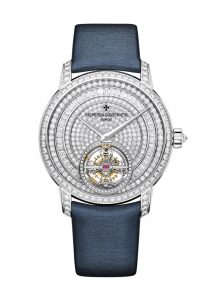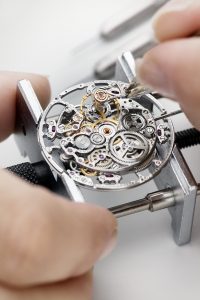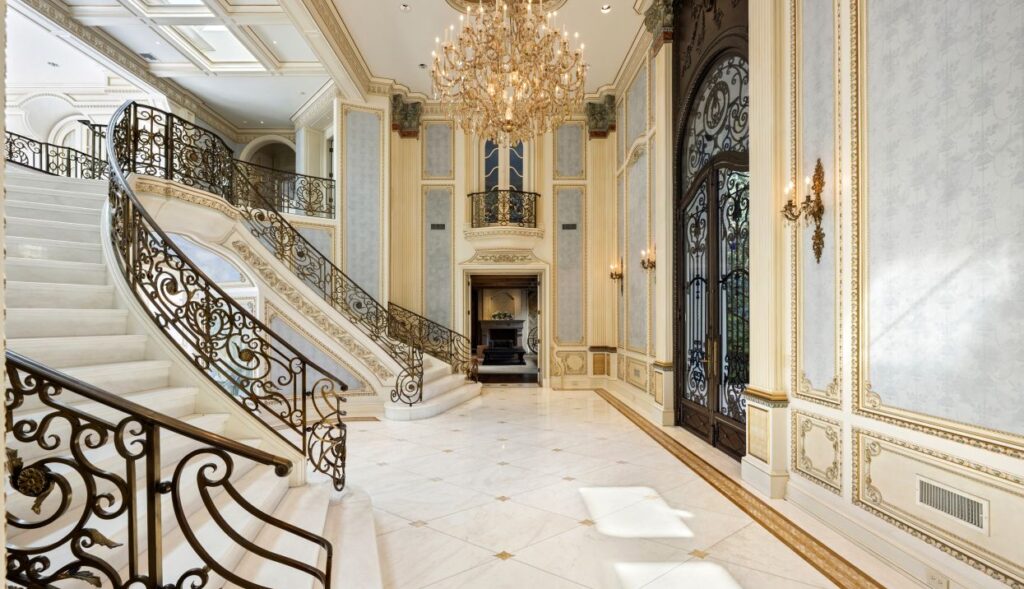In our hectic workdays, time is perceived as a finite resource, and wearing our watches can easily exacerbate that restless feeling. However, for the watchmakers (or “cabinotiers”) at Vacheron Constantin, the passage of time is exhilarating: it inspires art and reanimates history. Vacheron Constantin combines tradition with modernity to give their customers an effortlessly chic look, while still paying homage to their humble beginnings in 1755.
A Vacheron Constantin watch is more than just a stylish timepiece; it is the pinnacle of luxury. Wearing one of these watches signifies sophistication and class, as they are often diamond-studded, or depicting culture spots like New York and Paris through their engravings. These creations are customized and handmade by expert designers and watchmakers to carry out their customers’ unique desires. Christian Selmoni, as the Style & Heritage Director at Vacheron Constantin, oversees the multifaceted design process, as well as what goes into making a Vacheron Constantin creation so eye-catching.
Vacheron Constantin watches are grouped into collections, with each collection having its own specific features, designs, and mechanics. When new watches are made in any collection, the new creation has to match the standards of its predecessors. Selmoni cites the Tourbillon watch in the Overseas collection, a collection that emphasizes elegance, comfort, and culture, as an example. A Tourbillon-style watch is a recall to nineteenth- century watchmaking, which attempted to improve accuracy by counteracting gravity’s effects, and making adjustments based on the wearer’s spatial position. Selmoni noted a paradox in the Overseas Perpetual Calendar Ultra-Thin Skeleton creation of the Tourbillon watch in the Overseas collection; since the new Tourbillon is self-winding, the designers have to make sure the design is consistent with the Overseas collection’s aesthetics, but that the Tourbillon’s historical character is also emphasized.
In the Historiques collection, which contains “emblematic designs from our” [the company’s] “heritage”, the process is only slightly altered from the adaptations in the Overseas collection. To Selmoni, the challenge is creating “a new timepiece with contemporary technicality and functionality while remaining faithful to the original, particularly in its style and ‘spirit’.” One watch that was redesigned according to these expectations was a chronograph watch that Vacheron Constantin crafted in 1955. The original, rare, yellow gold watch was revamped in ways that adhered to its original style but mirrored 21st-century mechanics. Selmoni says the designers used a chronograph movement (a complication that imitates the function of a stopwatch), and they also reworked the case’s proportions, “adapting the diameter to today’s expectations.” As Selmoni mentioned, Vacheron Constantin’s blend of periodic styles and modern utility creates a watch that is not only trendy, but historic.
Vacheron Constantin’s distinct style has made their business renowned in the watchmaking industry. Selmoni attributes this to numerous factors, particularly the company’s usage of the Bella Figura, an Italian concept and style which combines “elegance, refinement, sophistication and a certain taste for classicism.” However, Selmoni is also sure to credit the many hands involved in designing a Vacheron Constantin watch, such as the artisans, designers, and craftsmen.
Vacheron Constantin watches often call for ornate art, so “enameling, engraving, guillochage” (engraving surfaces with a precise, intricate pattern of intersecting lines) “and gem-setting are involved at different levels and into various elements of a timepiece such as the case, dial, or movement.” As a result, the master artisans and the designers collaborate at every step of the watchmaking process, ensuring their individual crafts and talents can be harmoniously brought together, both “technically and aesthetically”, into the final design.
A personal, handmade touch is an essential part of Vacheron Constantin’s watchmaking process, even though they use modern manufacturing techniques to adapt to the 21st century. Selmoni states the company is inspired by the phrase Haute Horlogerie (simplistically put, this phrase means “the high art of watchmaking”, and a watch that possesses Haute Horlogerie often should have a multitude of complications, or functions, as well as polished and precise decorations). To Vacheron Constantin, Haute Horlogerie means that even though their watchmaking processes involve modern machines and technology, “it is highly important for us” (the company) “to keep hand-made assembling, hand-made decoration on our calibers and hand- made finishings.”
“Since the 18th century,” Selmoni says, “Vacheron Constantin has never ceased to innovate and create—without this perpetual quest for innovation and creation, we would not benefit from such longevity.”
Purchase your own custom made Vacheron Constantin creation at vacheron-constantin.com.









